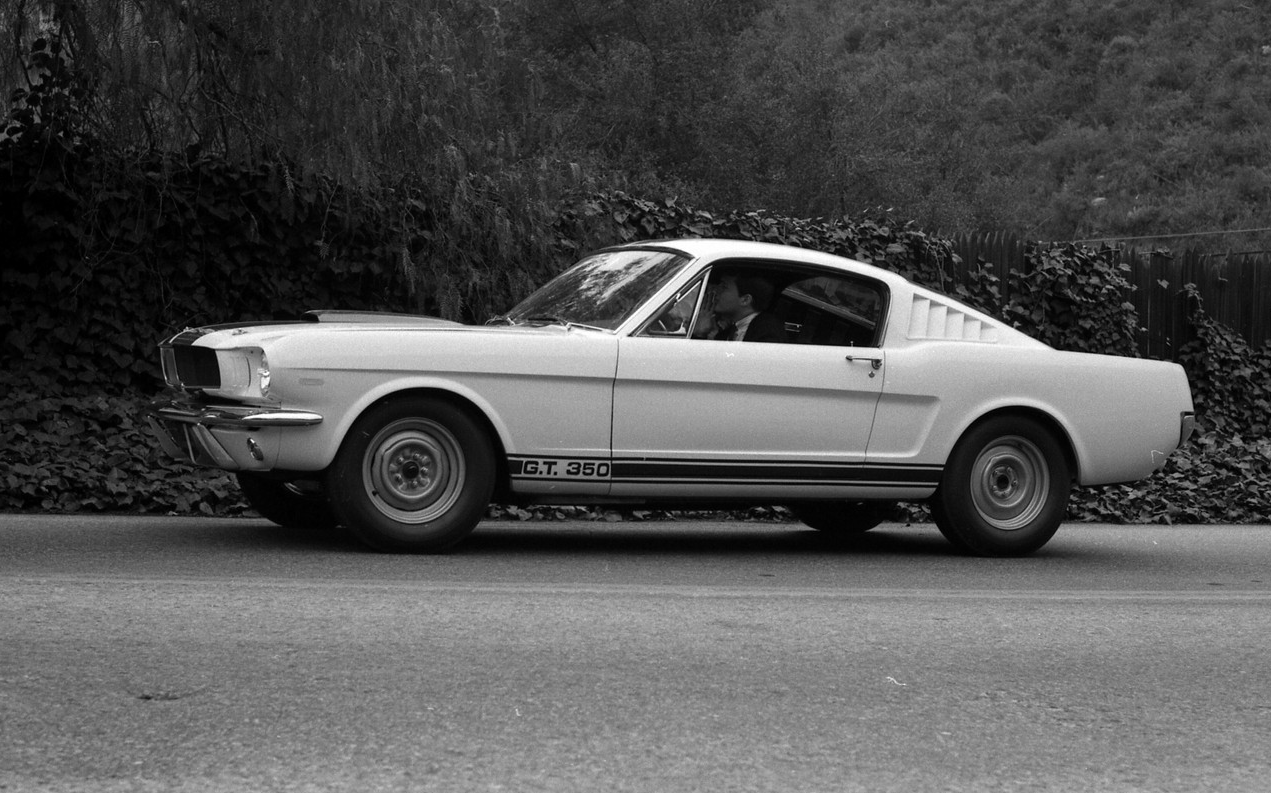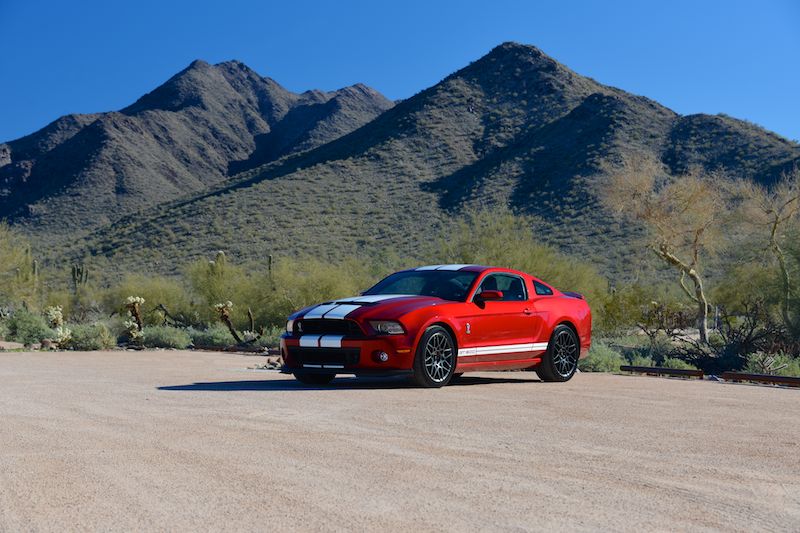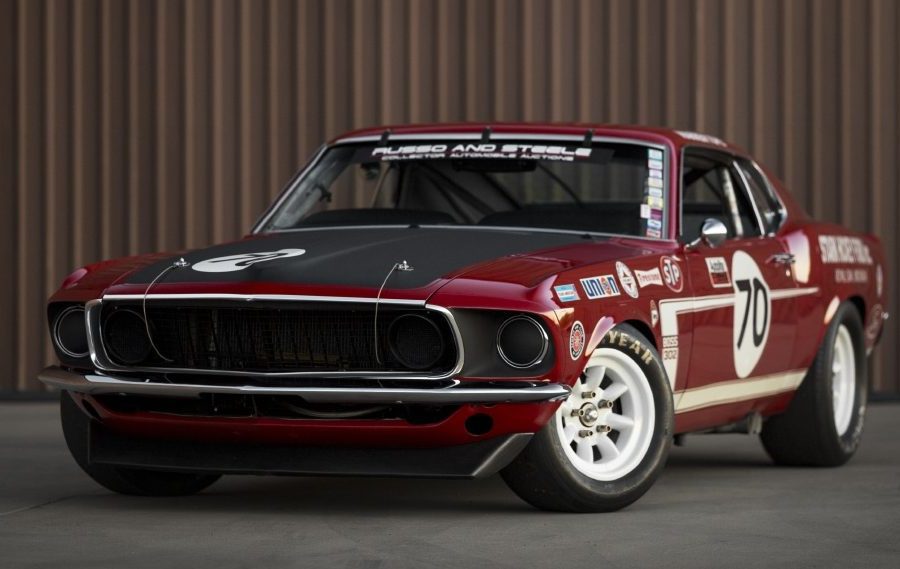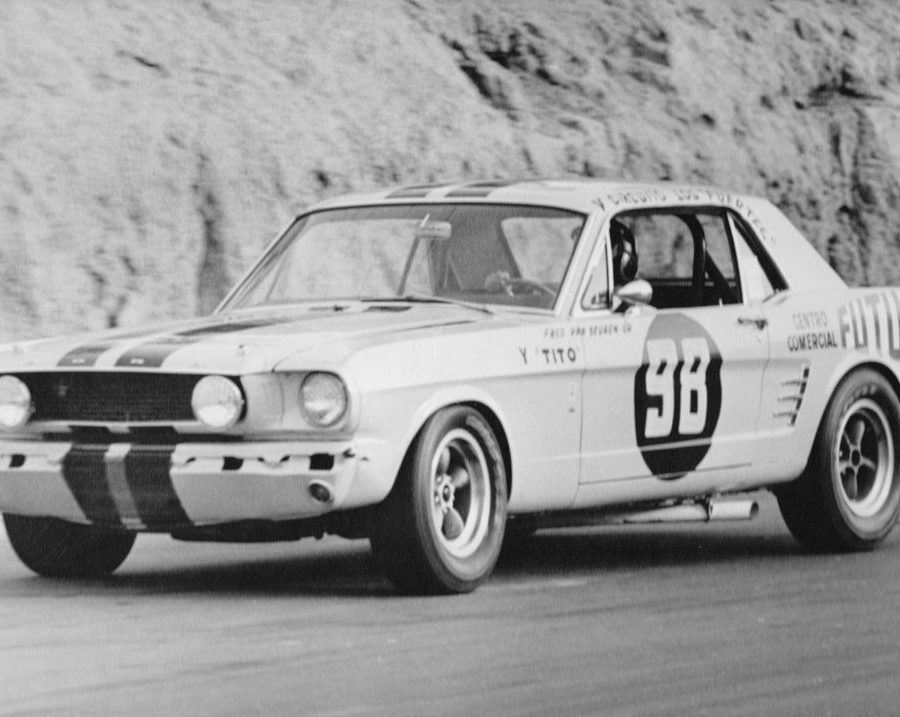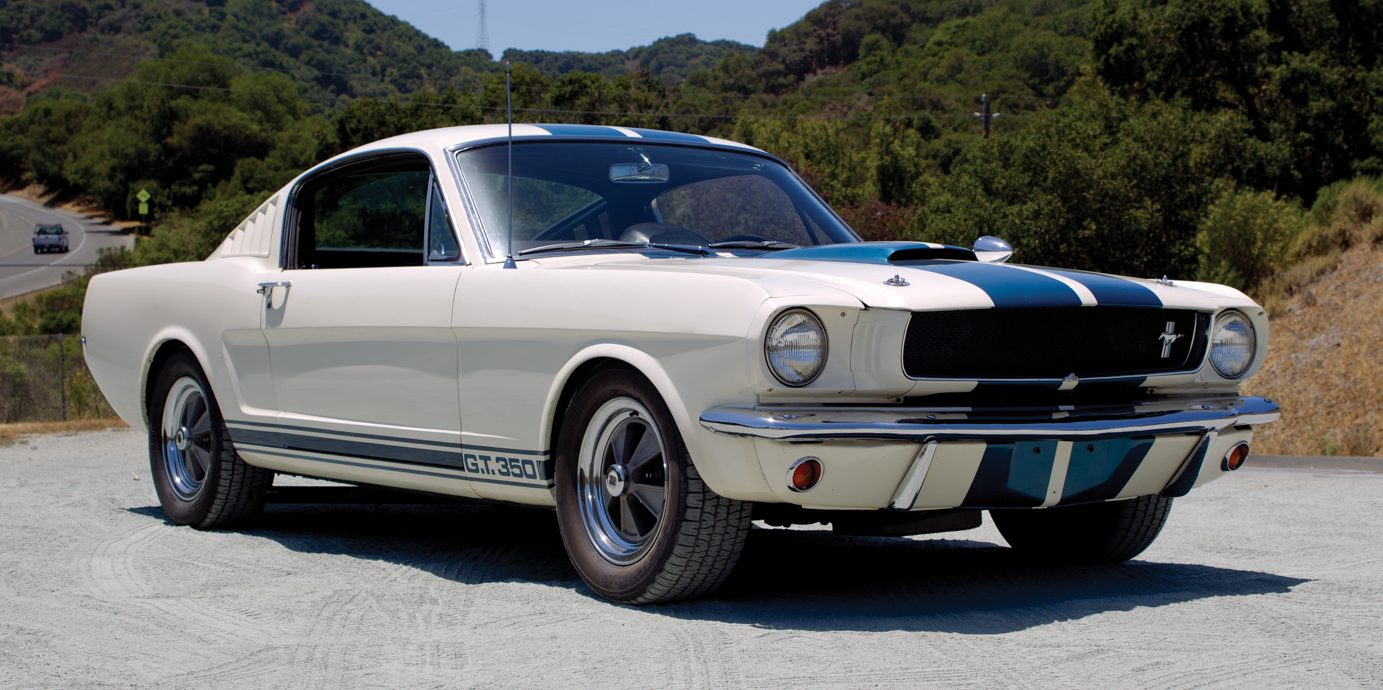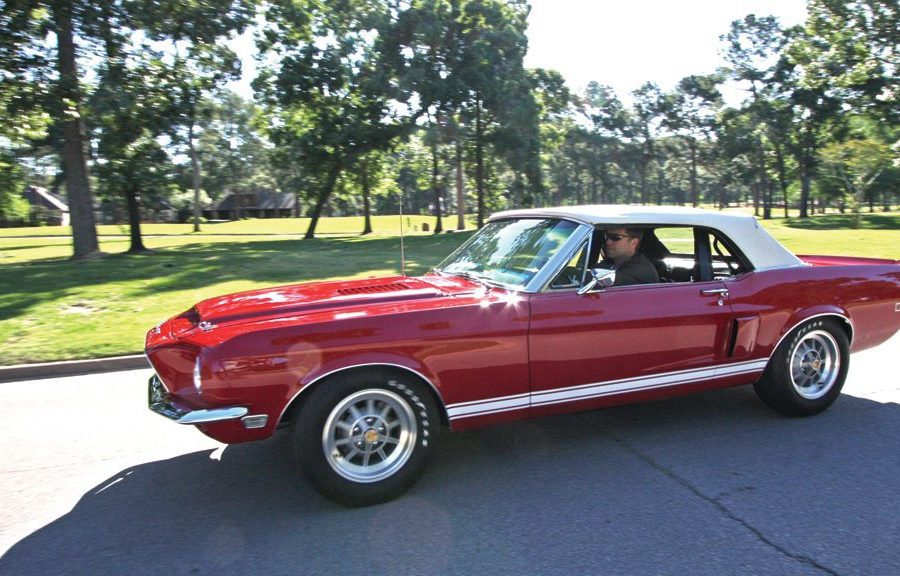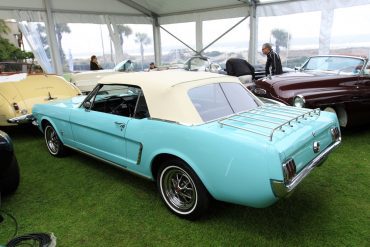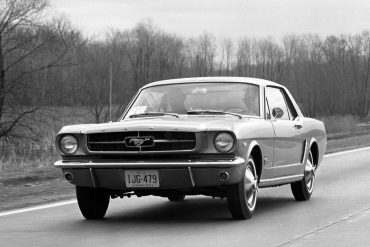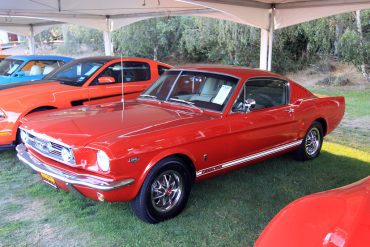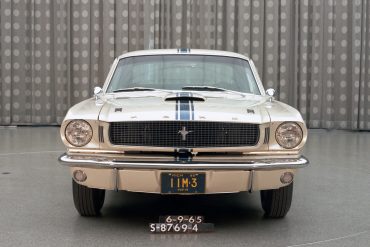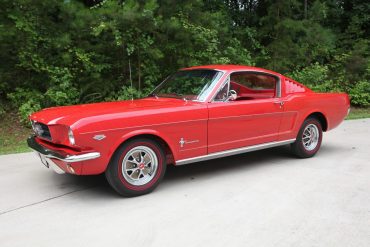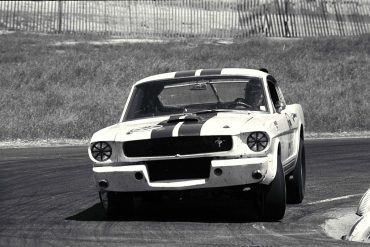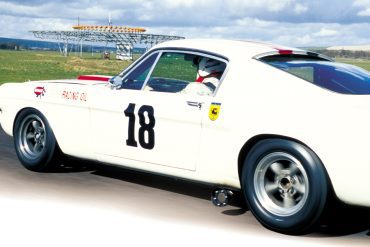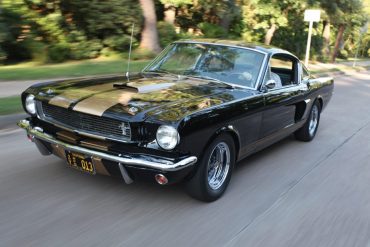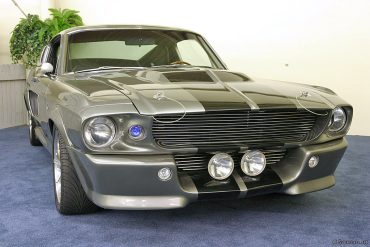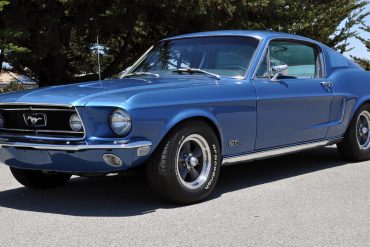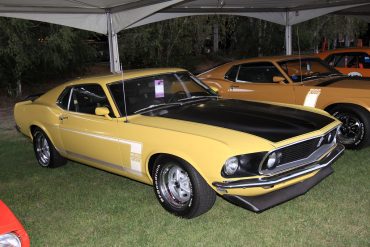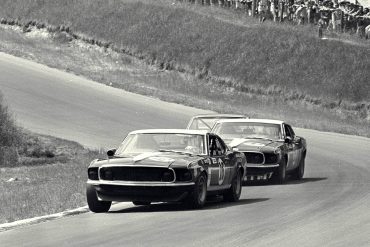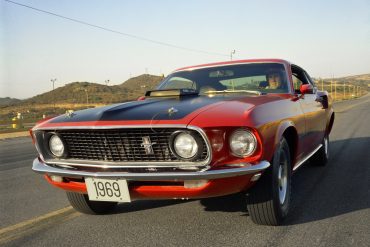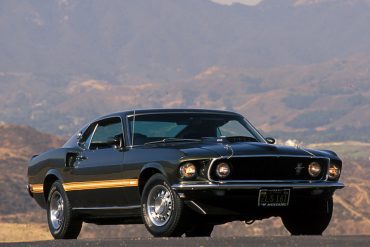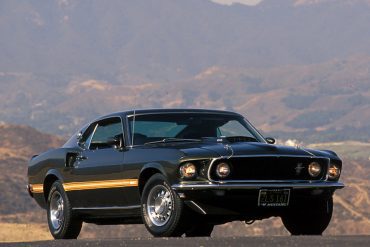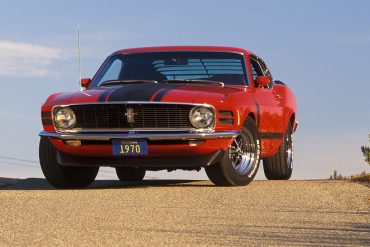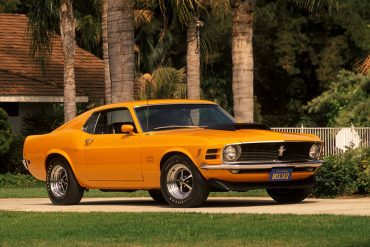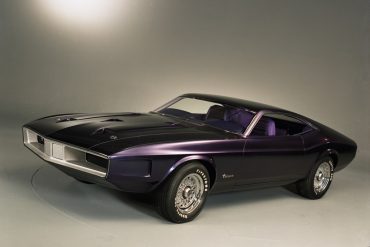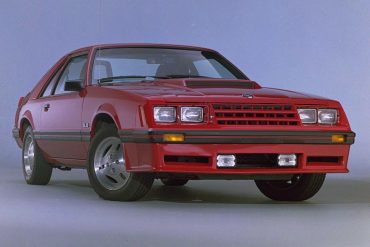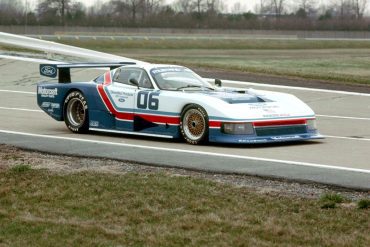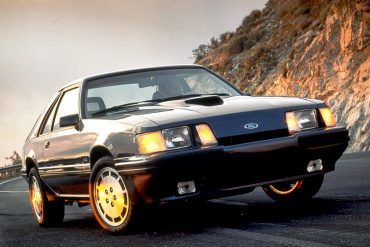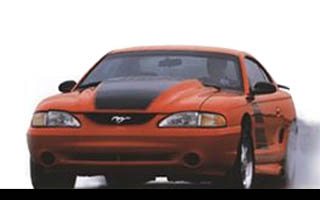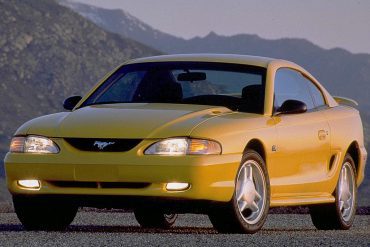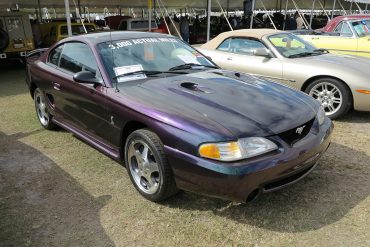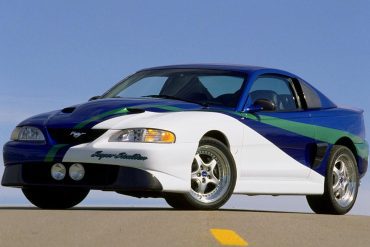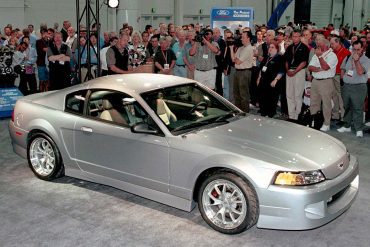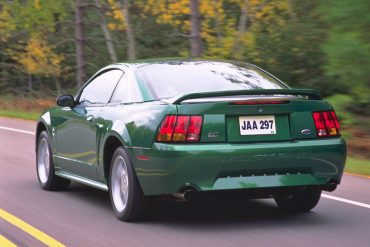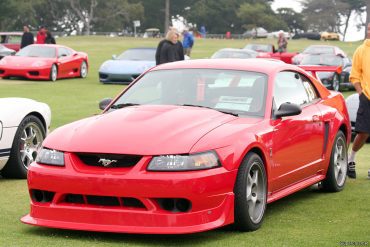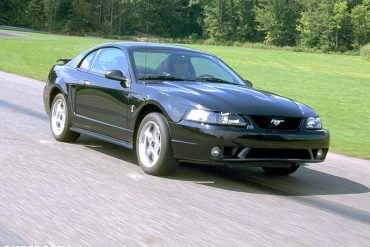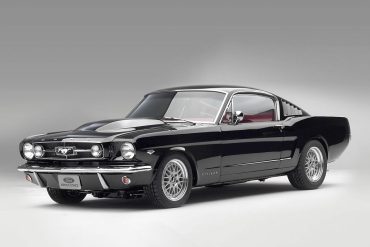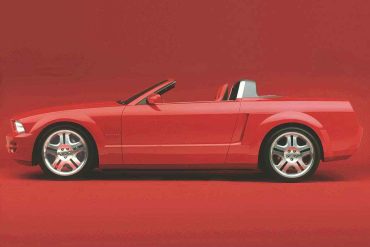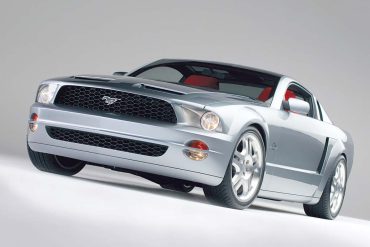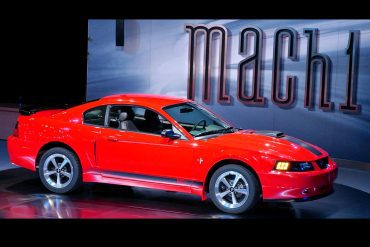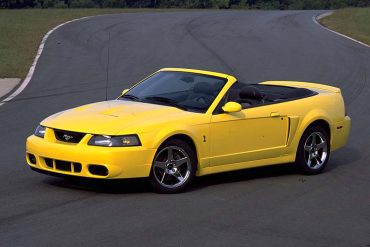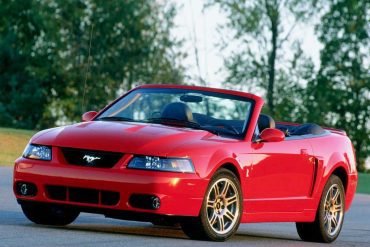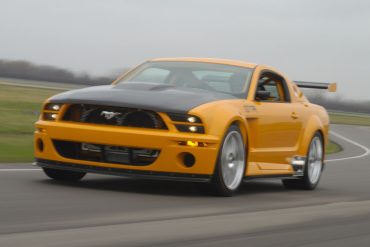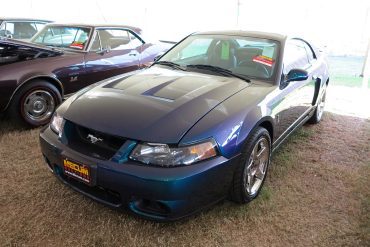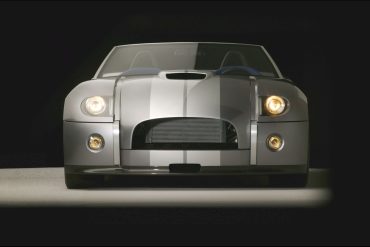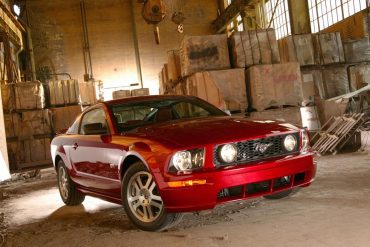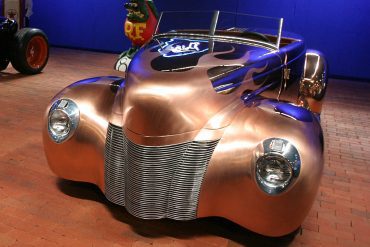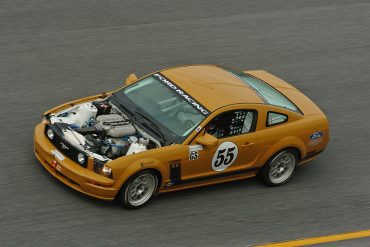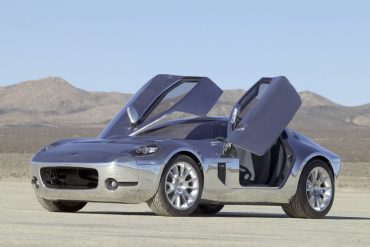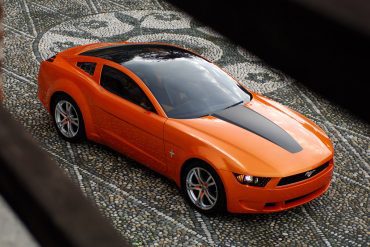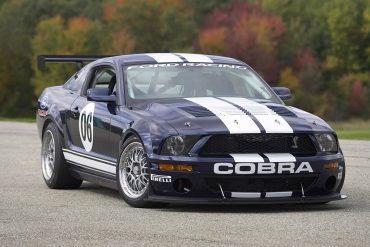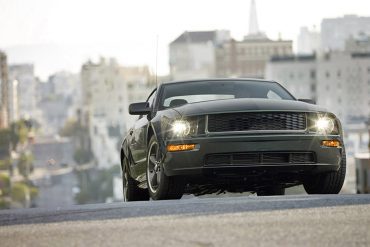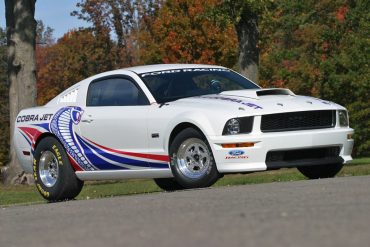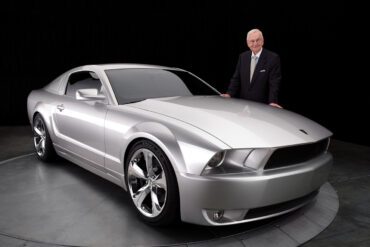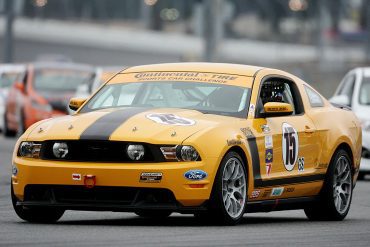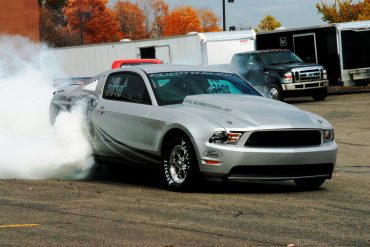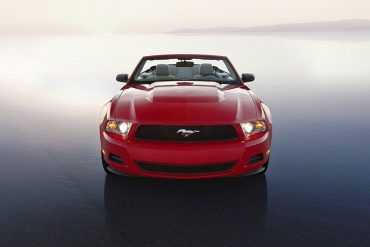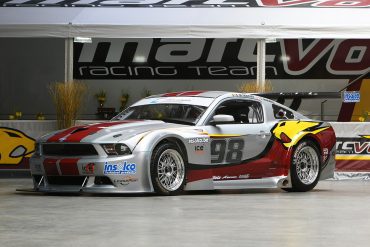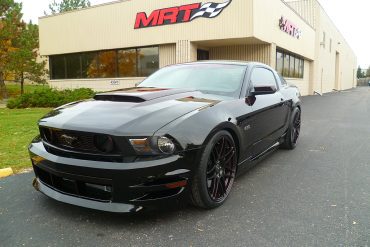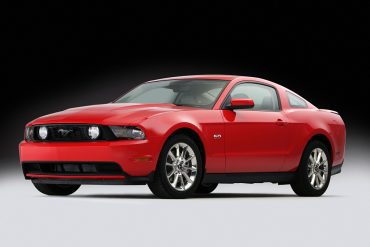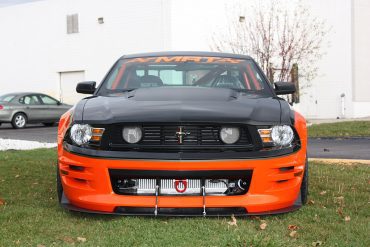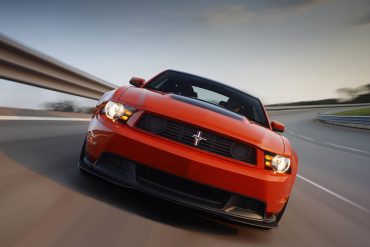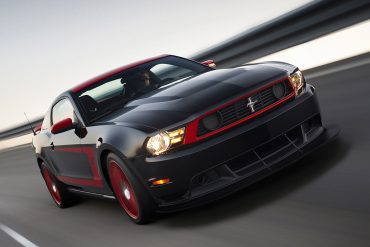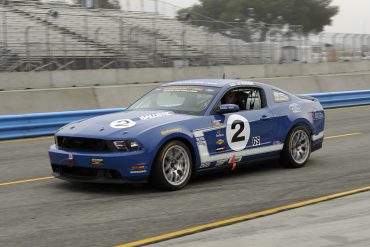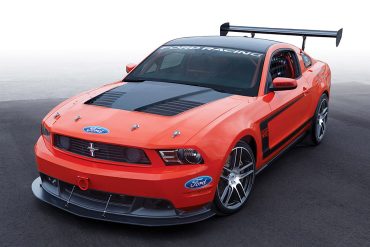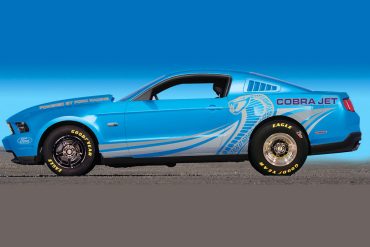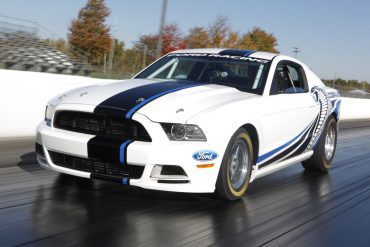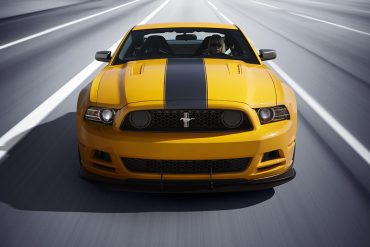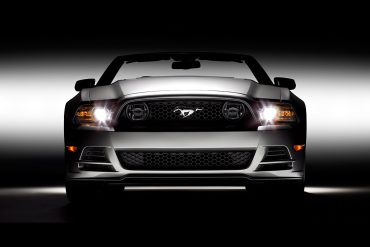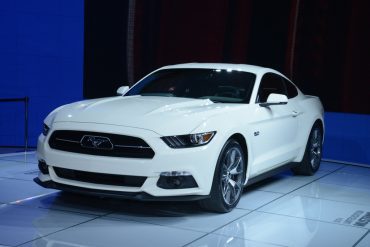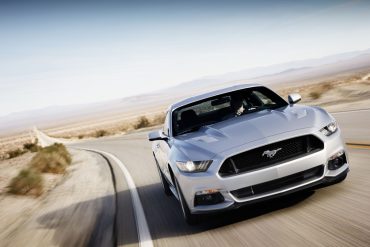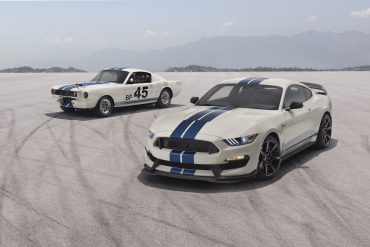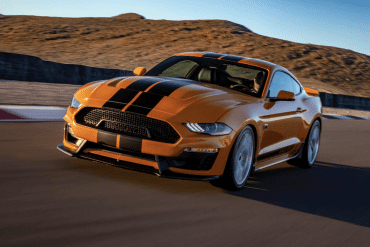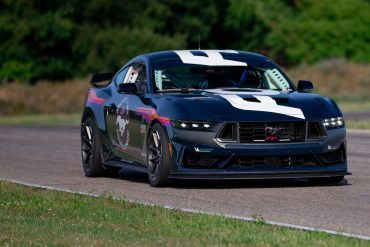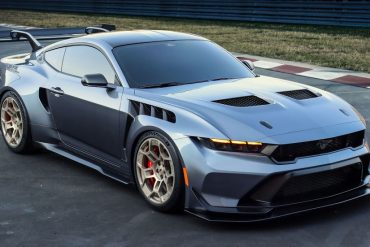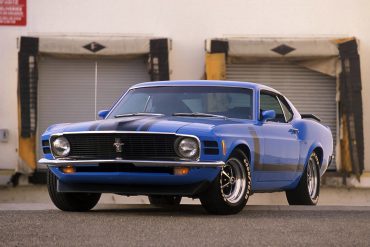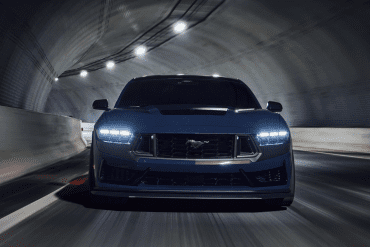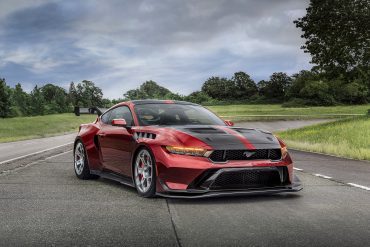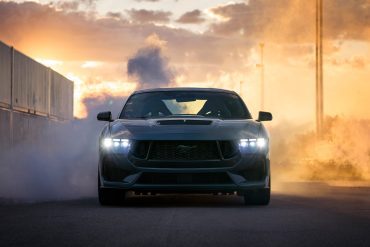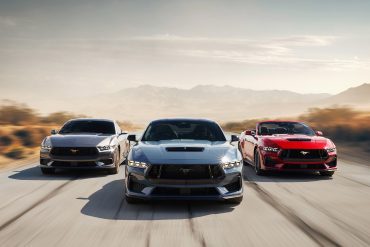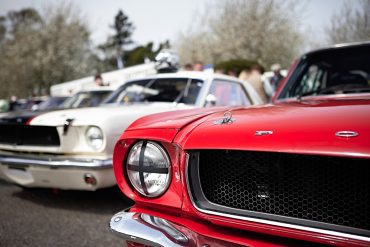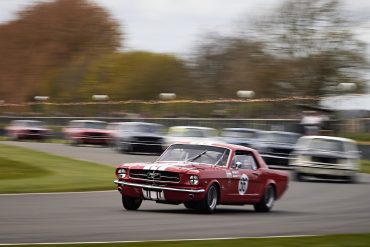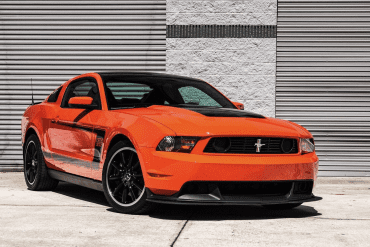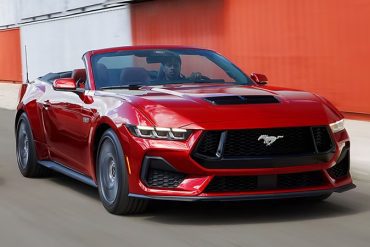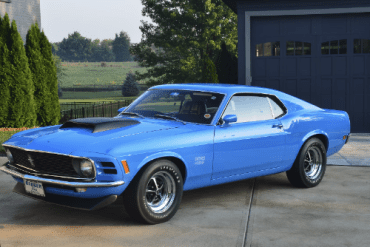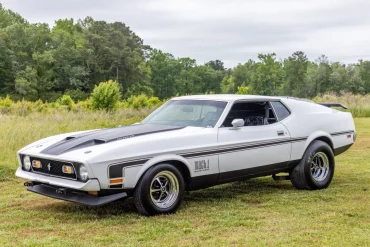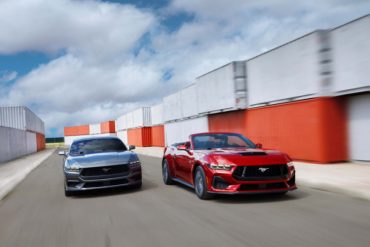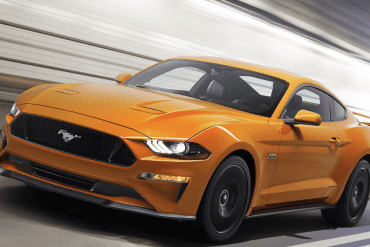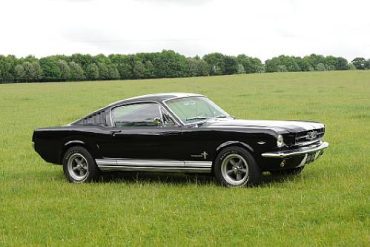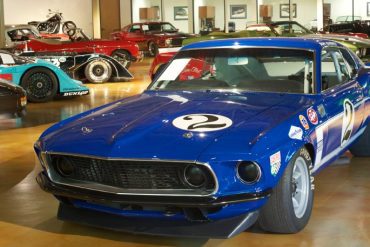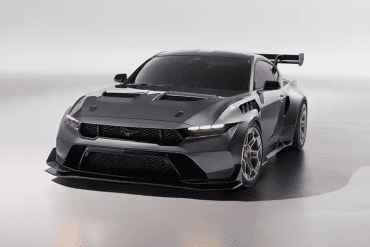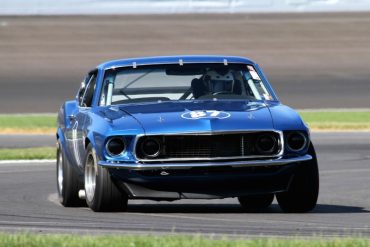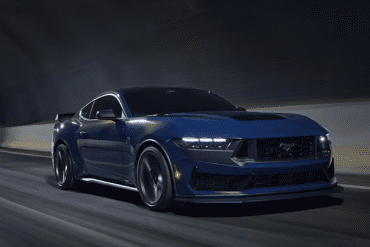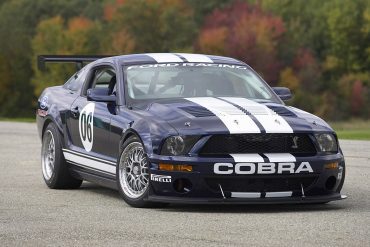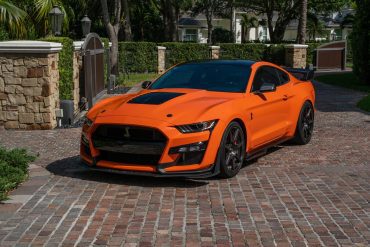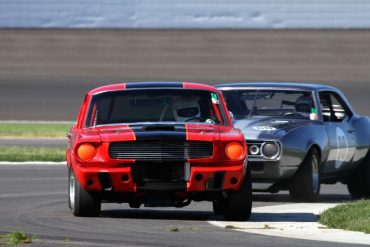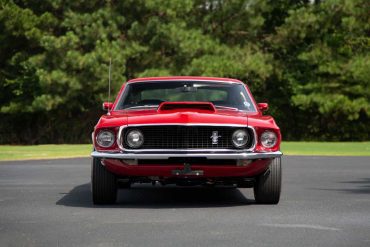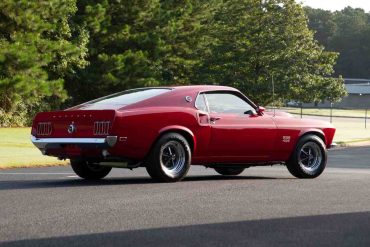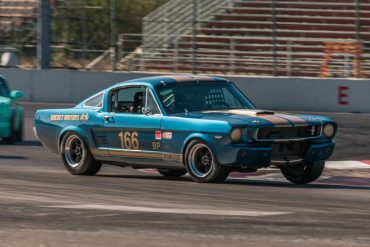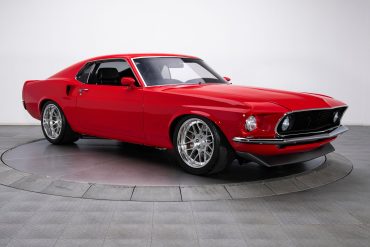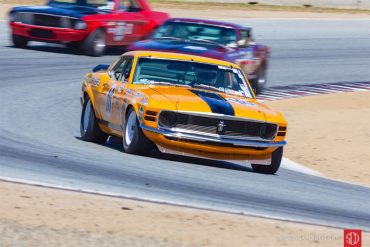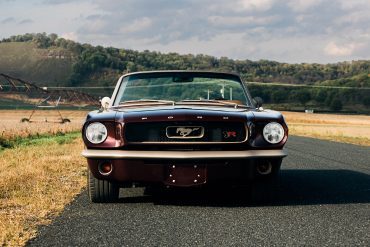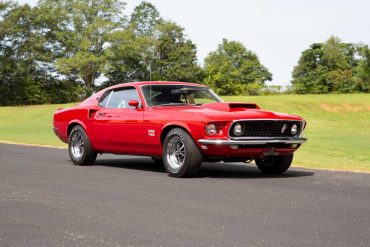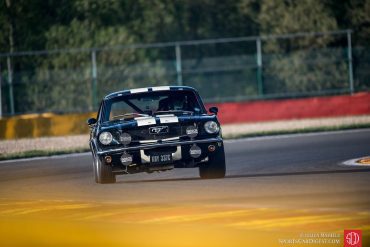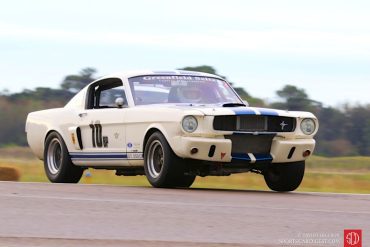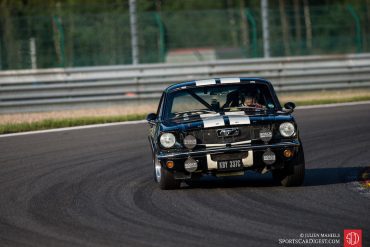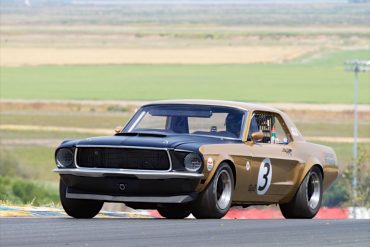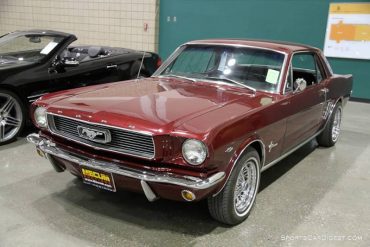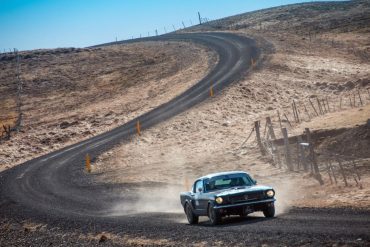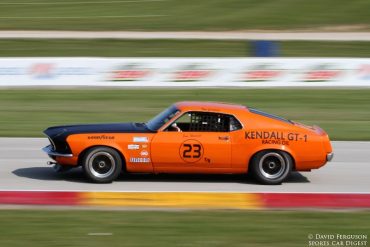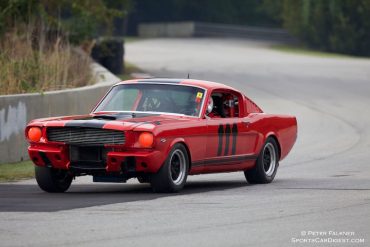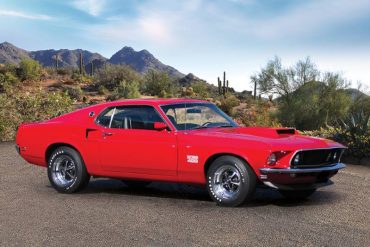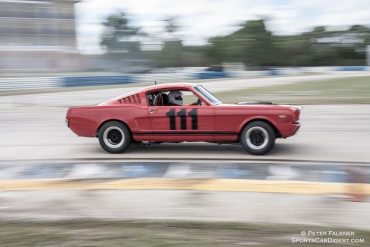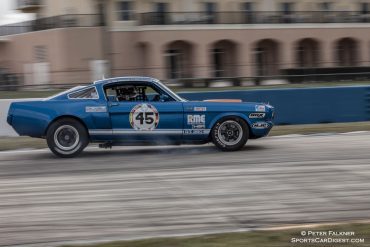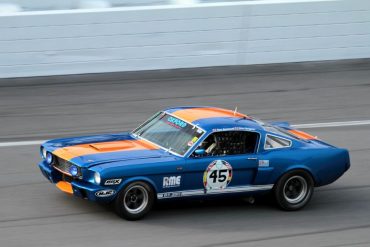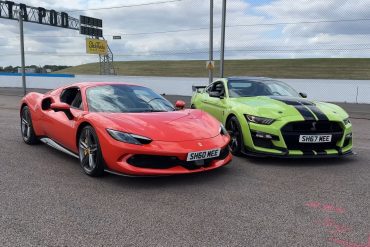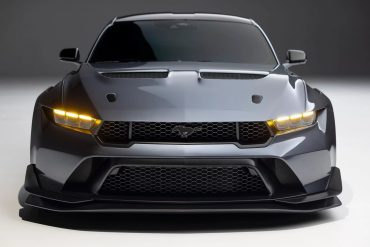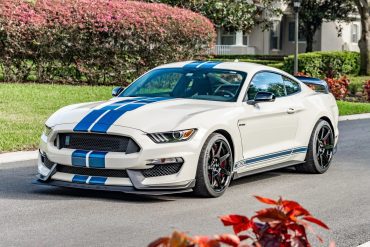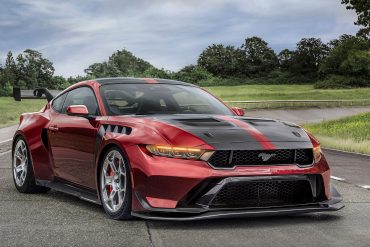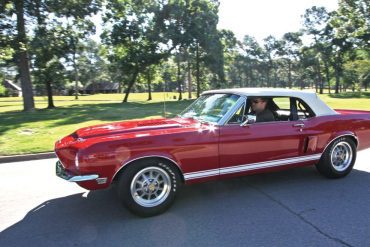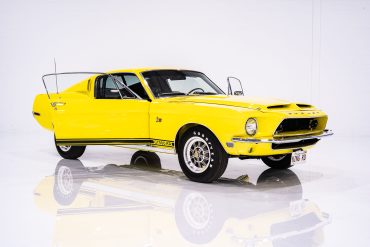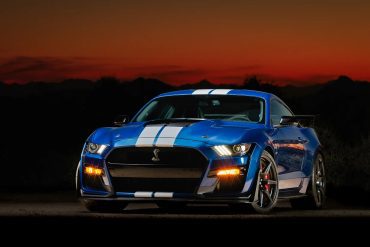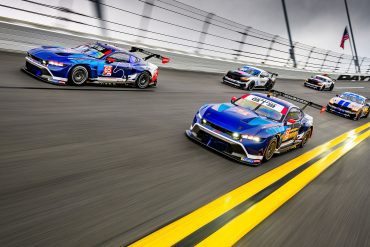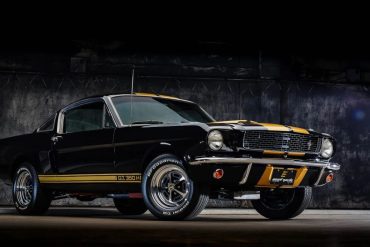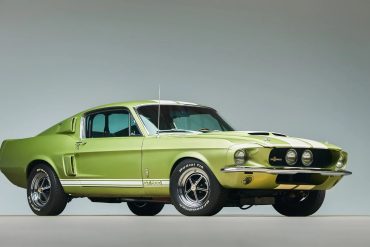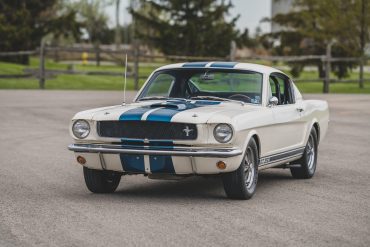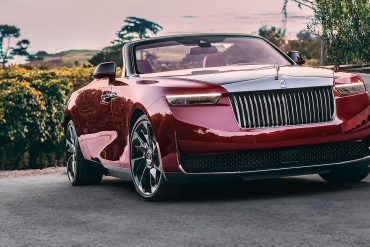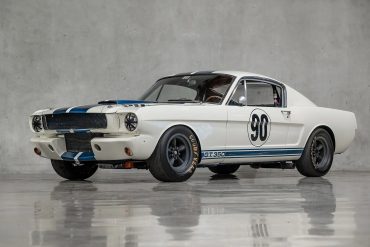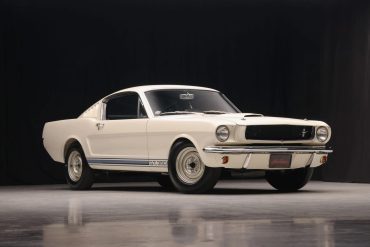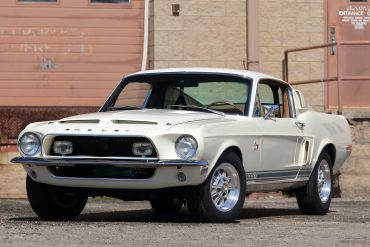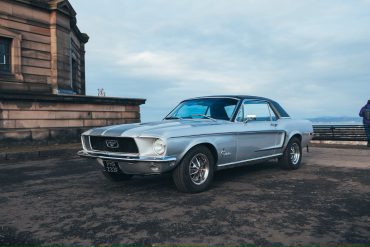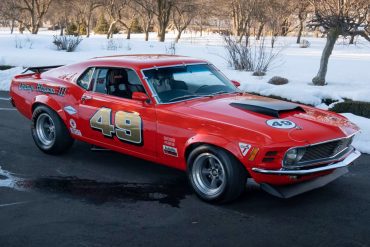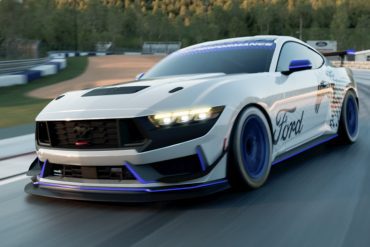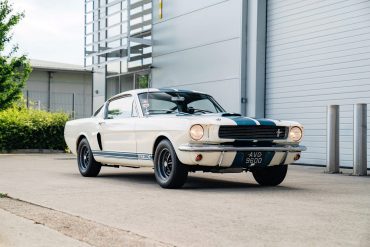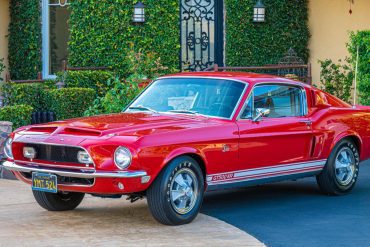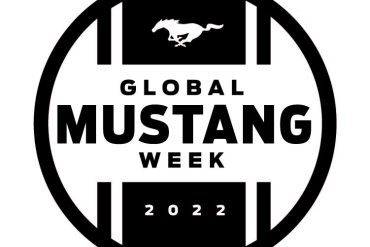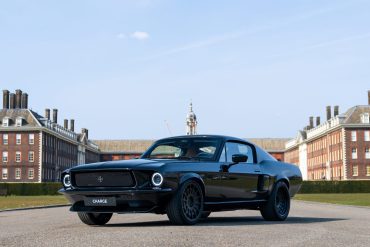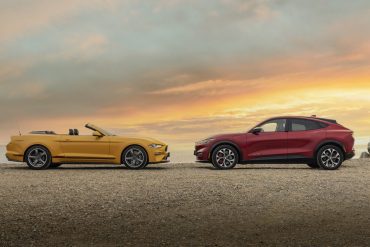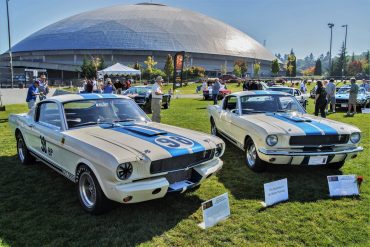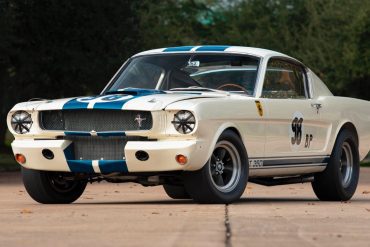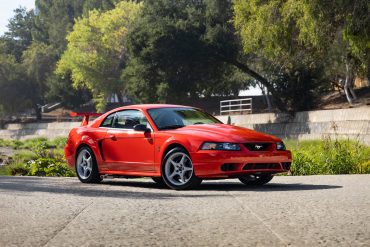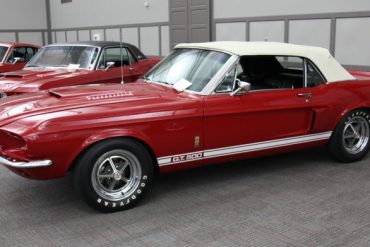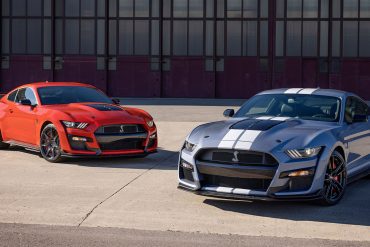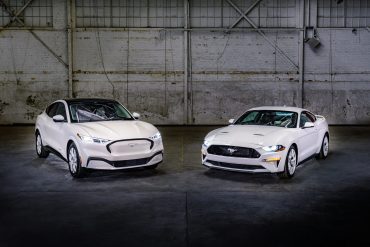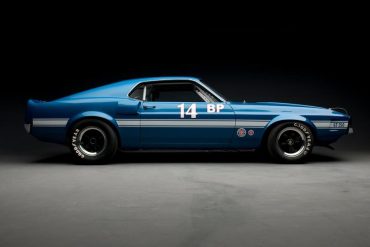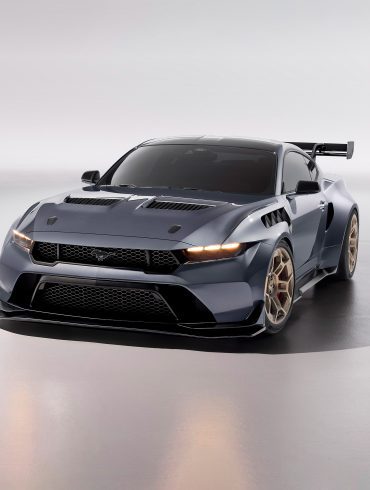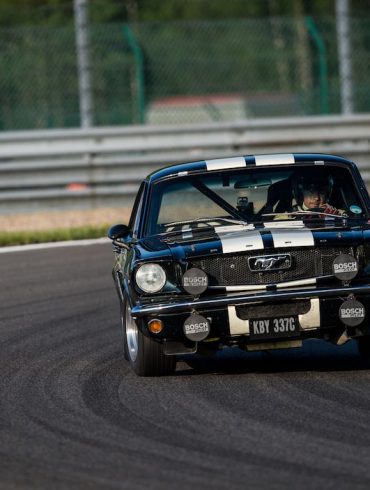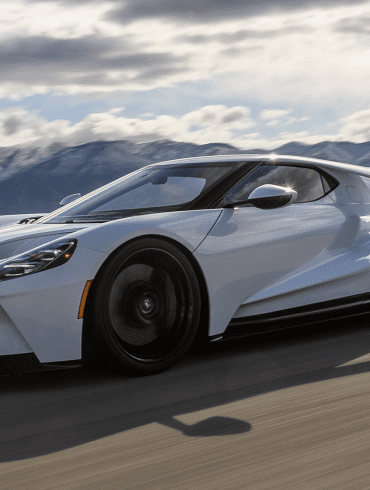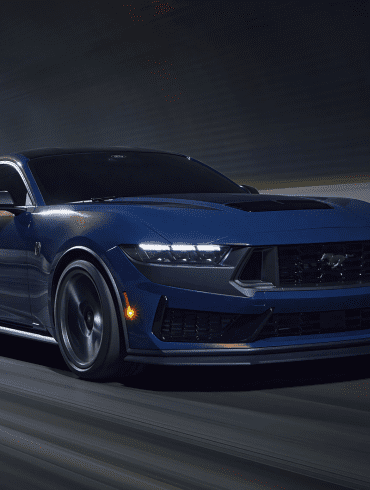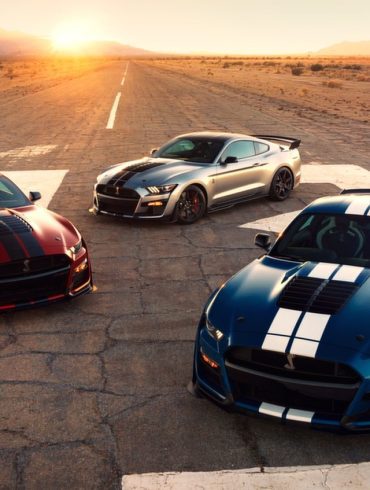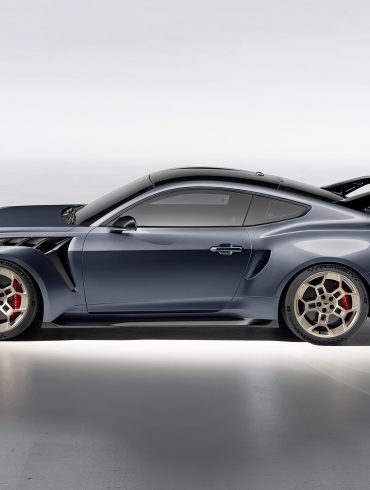Ford Mustang
1964.5 - Present - The Ultimate Guide
Unleash the legend of the Ford Mustang with this ultimate guide, galloping through every generation, from the iconic 1964½ original to the latest high-performance marvels and future electrifying iterations. It started with the runaway success of the first generation Mustang and continues today with the high-tech and award winning current Mustang generation that continues to wow us.
Overview / Featured / The Generations / Models In-Depth / Image Gallery / More Updates
The Ford Mustang: A Comprehensive Look at an American Icon
Since its debut in 1964, the Ford Mustang has become one of the most iconic cars in automotive history. Known for its powerful engines, sporty looks, and accessible price point, the Mustang helped shape the American muscle car culture and inspired a global following. This article dives into the origins, evolution, design, performance, and cultural significance of the Ford Mustang, examining what makes it a true legend.
1. Origins of the Ford Mustang
The Ford Mustang was born out of a desire to appeal to young, thrill-seeking drivers who craved speed, style, and affordability. The idea for the Mustang came from Ford’s then-general manager Lee Iacocca, who wanted to create a new kind of car – one that was sporty but not as expensive as a European sports car. The result was a “pony car,” a smaller, more affordable version of a muscle car that offered a fun driving experience at a reasonable price.
Key Specifications of the 1964 ½ Mustang:
Engine options: Inline-6 and V8
Transmission: 3-speed manual, 4-speed manual, and 3-speed automatic
Price: Approximately $2,368 (around $20,000 today)
Sales: Over 400,000 units sold in the first year
The Mustang’s incredible sales success demonstrated the market's demand for a car that balanced performance with practicality, and it helped cement Ford’s reputation as a leader in American automaking.
2. The Evolution of the Ford Mustang
The Mustang has undergone multiple transformations, evolving with changes in technology, design, and market demand.
First Generation (1964 ½ - 1973)
The first-generation Mustang featured a long hood and short rear deck, a look that became its signature. In 1965, the GT model was introduced with additional performance options, including a stronger V8 engine, dual exhaust, and stiffer suspension. As competition grew from Chevrolet’s Camaro and Pontiac’s Firebird, Ford continued to push the Mustang’s power output, reaching its peak with the 1971 Mustang Boss 351.
Second Generation (1974 - 1978)
The second-generation Mustang, known as the Mustang II, arrived amid the 1970s oil crisis. Ford responded by downsizing the car and offering more fuel-efficient engines. Though criticized for its lack of power compared to its predecessor, the Mustang II was a commercial success due to its practicality and alignment with economic needs.
Third Generation (1979 - 1993)
The third generation saw the introduction of the Fox body platform, which was more aerodynamic and allowed for more powerful engines. This generation gave birth to the Mustang GT, a high-performance variant that has since become a hallmark of the lineup. In 1984, Ford introduced the Mustang SVO, a turbocharged model that pushed the car’s technology forward and appealed to performance enthusiasts.
Fourth Generation (1994 - 2004)
The Mustang underwent a major redesign in 1994 with a more modern look while retaining classic elements, such as the running horse emblem. The car returned to its muscle roots, featuring a range of V8 engines and enhanced handling capabilities. The SVT Cobra model became one of the most beloved versions, featuring a 4.6L V8 engine that made it one of the fastest production Mustangs at the time.
Fifth Generation (2005 - 2014)
With the retro design wave of the 2000s, the fifth-generation Mustang adopted styling elements reminiscent of the 1960s models, rekindling nostalgia. This generation offered advanced technology, including Ford’s SYNC infotainment system, and several powerful engines, such as the 5.4L supercharged V8 in the Shelby GT500, which boasted over 500 horsepower.
Sixth Generation (2015 - Present)
The current generation Mustang took a major step forward with an independent rear suspension and a global launch, marking the first time the Mustang was sold in markets outside North America. The sixth-gen Mustang introduced turbocharged four-cylinder engines alongside the classic V8, catering to a broader audience and adapting to stricter emission standards. The Shelby GT350 and GT500 pushed performance boundaries with cutting-edge features like flat-plane crank V8s and advanced aerodynamics.
3. Design Language and Aesthetics
The Mustang’s design has always emphasized a combination of aggression and elegance. The elongated hood, fastback roofline, and pronounced rear fenders give it a muscular yet streamlined appearance, a balance that appeals to car enthusiasts around the world.
Throughout its iterations, Ford has maintained classic elements that are instantly recognizable: the galloping horse emblem, three-bar tail lights, and distinctive front grille. Ford has also incorporated modern elements, such as LED lighting and more aerodynamic contours, allowing the Mustang to maintain a fresh, contemporary look.
4. Engine and Performance Highlights
A hallmark of the Mustang’s legacy is its range of powerful engines, from the small-block V8s of the 1960s to today’s turbocharged and supercharged variants. Notable powertrains include:
289 V8 (1965-1968): One of the original powerhouses, delivering strong performance for its time.
428 Cobra Jet (1968-1970): An engine that catapulted the Mustang’s reputation as a formidable drag racer.
5.0L “Coyote” V8 (2011-present): Known for its reliability and performance, making it a favorite among modern muscle car fans.
5.2L V8 in the GT350 (2016-2020): A flat-plane crank V8, offering a higher rev range and distinctive sound.
Supercharged 5.2L Predator V8 in the GT500 (2020-present): Delivering over 760 horsepower, making it the most powerful production Mustang.
5. Special Editions and Noteworthy Models
Over the years, Ford has produced several limited-edition Mustangs that have become highly sought after:
Shelby GT350/GT500: High-performance models with a racing heritage, often with enhanced engines and unique styling.
Bullitt Edition: Inspired by Steve McQueen’s 1968 film Bullitt, featuring a classic green paint job, minimalist badging, and performance enhancements.
Boss 302/429: Designed for racing, with reinforced parts and more powerful engines, ideal for track use.
Mach 1: A track-oriented variant featuring suspension and aerodynamic upgrades, bridging the gap between standard Mustangs and Shelby models.
6. Cultural Impact and Legacy
The Mustang has cemented its place in pop culture, featured in numerous films, songs, and TV shows. Steve McQueen’s Bullitt, Gone in 60 Seconds, and more recent films like Need for Speed helped elevate the Mustang’s status as a symbol of freedom, rebellion, and raw power. The Mustang also holds the title of the world’s best-selling sports car, reflecting its popularity on a global scale.
The Mustang Club of America
The Mustang Club of America (MCA), founded in 1976, is one of the largest car clubs dedicated to a single model, boasting over 11,000 members. MCA organizes annual events, providing a community for Mustang enthusiasts to celebrate, modify, and showcase their vehicles. The club exemplifies the strong cultural impact the Mustang has had, fostering a global fanbase.
7. Future of the Mustang
The Mustang is evolving to meet the challenges of a rapidly changing automotive landscape. Ford recently introduced the Mustang Mach-E, an all-electric crossover, to appeal to environmentally conscious buyers while maintaining the Mustang’s spirited performance. The decision to use the Mustang name for an electric SUV was controversial, but it also signified Ford’s commitment to adapting to market trends.
In 2024, Ford unveiled the seventh-generation Mustang, keeping the iconic design language while incorporating modern technologies like a digital cockpit and driver-assist systems. With ongoing advancements in electrification and self-driving technologies, the Mustang is likely to continue its evolution without losing its core identity.
The Ford Mustang
Manufacturer: Ford
Production: March 1964 – present
Model years: 1965–present
Class: Pony car, muscle car (America), Roadster sport (Europe)
Body style: 2-door coupe, 3-door hatchback, 2-door fastback
2-door convertible
Layout: Front-Engined, RWD
"The Mustang created a whole new class of car. It was an affordable sports car that everyone could aspire to own."
Lee Iacocca
Ford Mustang Generations
Since its debut in the 1960s, the Mustang has symbolized America's love of fast cars and the open road. All of this for an affordable price that is made for the everyday American. Mustang have appealed to people of all ages and genders for since the very beginning when the juggernaut all began. The Ford Mustang was named not for horses, as one might expect, but for World War II fighter jets. The first official unveiling of the production Mustang was in New York on April 17, 1964, at the World's Fair. This was not the first glimpse of the Mustang, however, as two concept cars were shown in advance. The first showing came in 1962 and the second in 1963, only four months before the World's Fair debut. The grand unveiling of the two-seat "pony" car was made by Henry Ford II, and that same day, at Ford showrooms nationwide, consumers were able to view and even purchase one of the new cars for themselves. In fact, 22,000 were sold that day, more than 100,000 in the shortened first year, and as many as 500,000 in 1965. The interest in and demand for the car was partially due to the interest created by major media outlets.
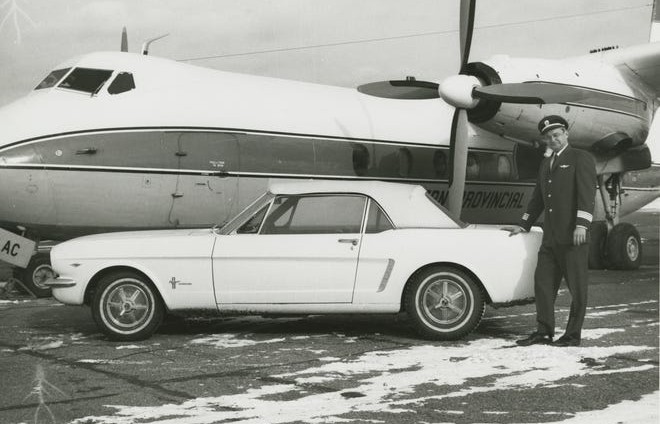
1st Gen Basics
Also called: Ford T5
Production: Mar 1964 – Ju 1973
Model years: 1965–1973
Designer: Gale Halderman
Body style: 2-door hardtop, 2-door fastback, 2-door convertible
Layout: Front-engine, RWD
1st Generation Mustang (1964.5-1973)
"An American Icon Is Born"
On Friday, April 17th, 1964, the world was forever changed with the introduction of an all-new breed of sports car. The Ford Mustang arrived in Dearborn, Michigan and created a pandemonium unlike anything seen by the Ford Motor Company prior to its introduction.
Demand for the Ford Mustang almost instantaneously overwhelmed the company’s ability to produce the incredibly popular automobile. Feuds to purchase the car were common and created an incredible amount of hype that only further escalated the demand for this iconic sports car.
The first Mustangs were made so they could be sold at an extremely low cost. In fact, the list price of the Mustang released in 1964 was as low as $2,368 for a standard coupe. To accomplish this, components from a relatively small car already in production, the Ford Falcon, were used.
2nd Generation Mustang (1974-1978)
"The Mustang II"
The second-generation Mustang, called the Mustang II, was based on the Ford Pinto. It bore little resemblance to the first generation.
Released for the 1974 model year, it was lighter, by nearly 500 pounds, and smaller, with a four-cylinder engine to help counter rising gas prices. In addition, production of convertibles came to an end. In 1975, a Ford Mustang II was released with a 302-cubic-inch V8 engine, followed by the new Cobra II package the next model year.
The Ford Mustang II with the Cobra II package featured front and rear spoilers, a hood scoop, and body stripes down the center for a sporty appearance. Despite the downsizing, the Mustang II was highly anticipated by American consumers due to the market's desire for smaller vehicles.
The Mustang II sold quite successfully and was awarded Motor Trend's Car of the Year in 1974.
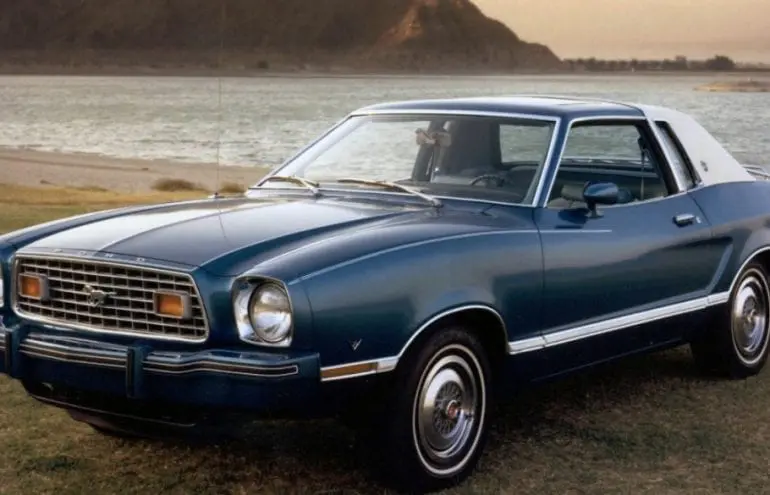
2nd Gen Basics
Also called: Ford Mustang II, Ford T5 (in Germany)
Production: 1973–1978
Model years: 1974–1978
Designer: Buck Mook
Class: Pony car, Subcompact car
Body style: 2-door coupe, 3-door hatchback
Layout: Front-engine, RWD
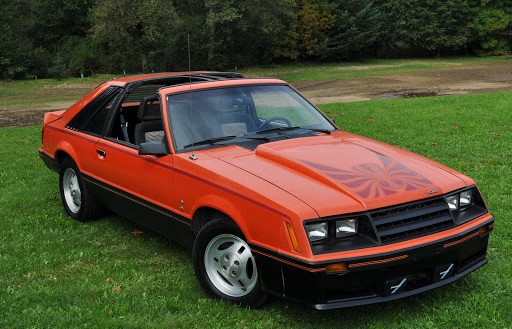
3rd Gen Basics
Also called: Ford T5
Production: 1978 – 1993
Model years: 1979 - 1993
Designer: Jack Telnack
Class: Pony car
Body style: 2-door convertible, 2-door coupe, 3-door hatchback
Layout: Front-engine, RWD
3rd Generation Mustang (1979-1993)
"Welcome to the Famous Foxbody"
The third generation of Mustang was built on the Fox platform which was used extensively by Ford on its midsize cars.
Initially, Ford executives wanted to transform the Mustang into a front-wheel drive vehicle to go with the current trends of the time, but fans wanted the Mustang to stay as a rear-wheel drive and ultimate won.
The Foxbody Mustang offered a variety of engines during its run, including an inline-four, an inline-six, a V6 and a V8. Four or five-speed manuals were standard as well as three or four-speed automatics. The appearance of this Mustang took on a more modern look with less heft than the earlier generations. The front end was unspectacular with large rectangle style headlights.
In 1980, a hardtop was released for a convertible feel, but in 1983, after a nine-year absence, the convertible Mustang made a comeback.
One of the most notable models introduced in the third generation of Mustangs was the Special Vehicle Team (SVT) Cobra, a special-edition Mustang released in 1993.
4th Generation Mustang (1994-2004)
"Mustang Returns To Its Roots"
A major redesign was in the works for the fourth generation of Mustang and the classic Mustang styling was back in a big way.
Features like the traditional pony grill emblem and side scoops made a comeback. Even though it was still built on an updated Fox platform, the Mustang was called SN-95 by Ford.
The base Mustang in 1994 through 1998 offered a 3.8-liter V6 and a five-speed manual transmission. A four-speed automatic transmission was optional. The Mustang GT boosted performance with a 5.0-liter small-block V8. The Cobra R got an update and limited re-release in 1995 and in 2000, an updated Cobra R was released. It featured a 5.4-liter V8 engine with 385 horsepower and five-spoke alloy wheels.
Also during the fourth generation of the Mustang, Ford introduced its more conventional models in a variety of striking colors, such as bright yellow, bright green, purple, and metallic hues. Inspired by the 1968 film Bullitt featuring Steve McQueen and the 1968 Mustang GT, Ford released the Bullitt GT in 2001.
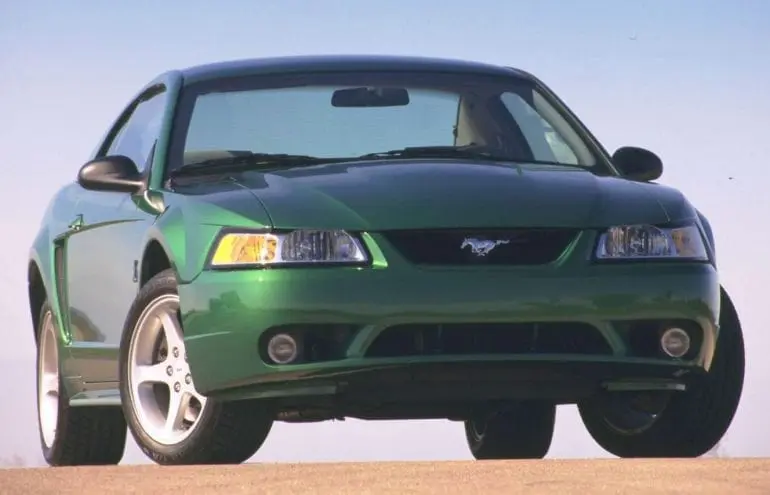
4th Gen Basics
Also Known As: SN95
Production: Oct 1993 – May 2004
Designer: Bud Magaldi (exterior), Emeline King (interior), Doug Gaffka (facelift)
Body style: 2-door convertible, 2-door fastback coupe
Layout: Front-engine, RWD
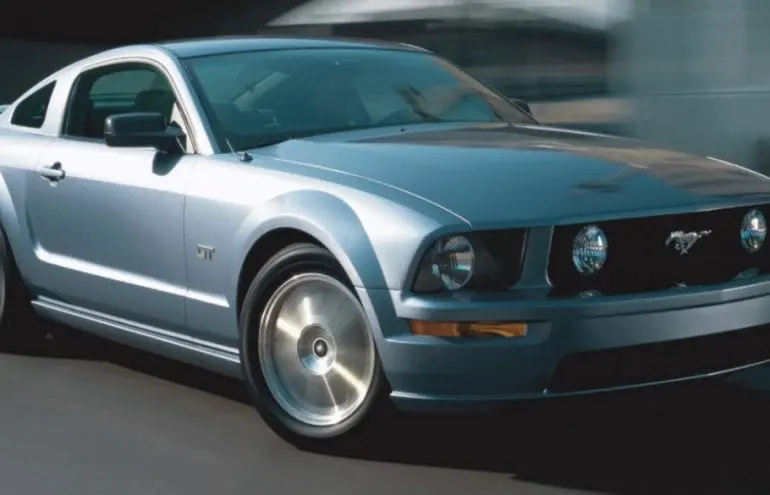
5th Gen Basics
Production: Sep 2004 – Ju n 2014
Model years: 2005 - 2014
Designer: Sid Ramnarace
Class: Pony car, muscle car
Body style: 2-door convertible, 2-door coupe
Layout: Front-engine, RWD
5th Generation Mustang (2005-2014)
"Muscle Car Performance Is Back"
The fifth generation Mustang committed even more to the retro styling of earlier models with a truly muscular look. The front grille and headlight placement highly resembled the earliest Mustang models.
For the first half of this generation, the Mustang featured a 4.0-liter V6, a 4.6-liter V8 or a 5.4-liter supercharged V8. Transmissions included a five or six-speed manual or a five-speed automatic. The second half of this generation saw a reworked design for better aerodynamics, though it looked ostensibly the same save for some other cosmetic details such as a redesigned emblem and headlight placement.
A 5.8 liter V8 became the biggest engine offered, and a six-speed automatic transmission was introduced as well. The GT-500 came with a 500-horsepower engine, and the limited-edition GT500KR offered a 5.4-liter engine with 540 horsepower.
The 2010 model year came with an optional Track Pack performance package. A new Shelby GT350 made its way on the streets in the 2016 model year.
6th Generation Mustang (2015-2023)
"The Sophisticated Mustang Arrives"
The current generation of Mustang departed from the previous two generations in a few ways.
It now has a fully independent rear suspension, and the exterior design was adjusted to a more futuristic, European look versus the earlier retro-oriented style. The design update was a nod to the fact that this generation is the first Mustang to be sold globally.
Four main engines became available on this version, including a 310-horsepower, 2.3 liter EcoBoost turbocharged inline-four, a 300-horsepower, 3.7-liter Cyclone V6 through 2017, a 435-horsepower, 5.0-liter Coyote V8 and a 5.2-liter Voodoo V8. A six-speed manual transmission was standard, and a six-speed automatic was offered through 2017 before a 10-speed automatic took its place in 2018.
Also in 2018, the base 3.7-liter V6 was dropped from the lineup and the EcoBoost turbo four became the base engine. Each new year brings more sophistication and overall sports car performance. The Mustang is finally a true competitor to European exotica.
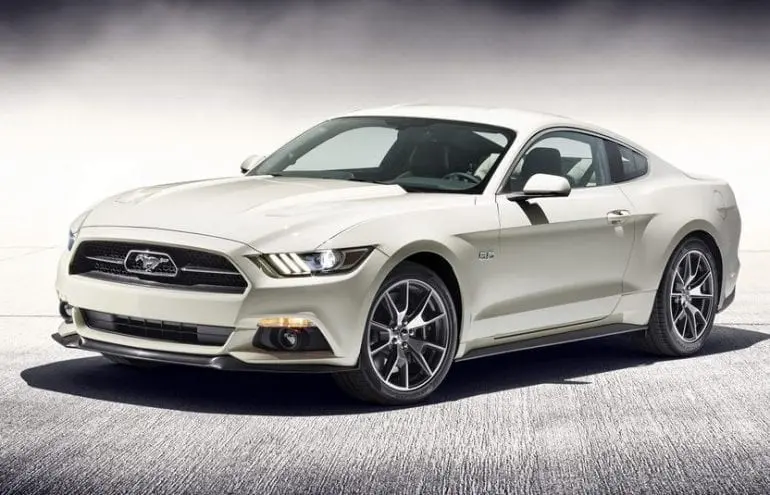
6th Gen Basics
Also Known As: S550
Production: Aug 2014 – Apr 2023
Model years: 2015 - 2023
Designer: Kemal Curić (exterior), Sewon Chun, Michael Thomson (interior)
Class: Pony car, muscle car
Body style: 2-door convertible, 2-door coupe
Layout: Front-engine, RWD
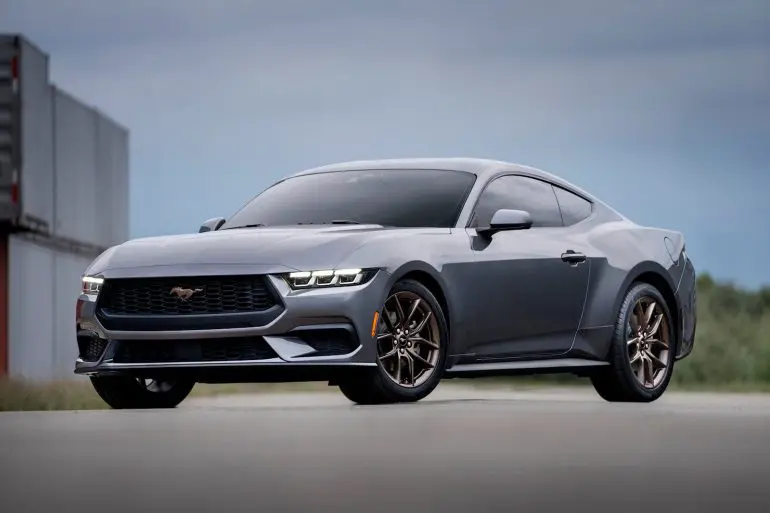
7th Gen Basics
Also Known As: S650
Production: May 2023 – Present
Model years: 2024 - Present
Designer: Chris Stevens
Class: Pony car (D), Muscle car (S), (EcoBoost, GT, and Dark Horse), Sports car (S) (GTD
Body style: 2-door convertible, 2-door coupe
Layout: Front-engine, RWD
7th Generation Mustang (2024 - )
"Redefines Driving Freedom"
Ford launched the seventh generation Mustang sports car with reworked-but-familiar styling, revised chassis hardware, an all-new interior, and two improved powertrains.
The new-gen car will continue to be powered by a 5.0-liter V-8 and an updated turbocharged 2.3-liter EcoBoost engine, though Ford hasn’t told us how many horses are present in either powertrain—only that there will be more of them than before. Both a six-speed manual and a 10-speed automatic will be available depending upon engine choice.
The Mustang will continue to be offered in both hardtop coupe and soft top convertible bodystyles. The Mustang’s rethought cockpit includes an available 13.2-inch display that’s part of a large curved screen that extends over the center stack area. The system also replaces traditional knobs for climate and radio control with touchscreen “buttons.” Sales of the new pony car began sometime during summer, 2023.
Our Favorite Ford Mustang Images
"The Mustang is meant to be driven so that one can enjoy the hell out of all of it."
Carroll Shelby


